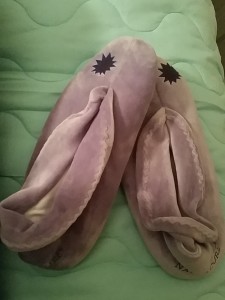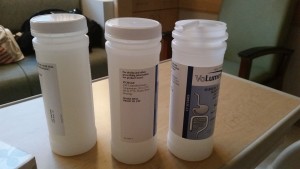Every so often, a list pops up online of what to say/not say to the chronically ill. My major annoyance is not generally the random unhelpful statements of “at least it’s not ____!”, but the prying and pointless questions people ask. Here are a few things I wish people wouldn’t ask those of us who are chronically ill.
Ten Things You Don’t Need to Know About Chronically Ill People
Every detail about their illnesses.
Most chronically ill people who have been diagnosed for a reasonable length of time will be happy to fill you in on the basics, but please don’t take it to the extreme. As an IBD patient, I’ve heard questions like “so how many times a day do you use the bathroom?” Think for a minute: do you REALLY need to know that? Probably not.
What medications and treatments they’ve tried.
We may hesitate to continue a conversation along these lines because we: A. know you probably have no idea what we’re talking about, and B. realize you’re about to give us some unsolicited treatment advice that proves you have no idea what we’re talking about.
Why they don’t want to try a certain treatment.
You try reading the lists of possible side effects that come along with our medications, and considering whether or not you could deal with that on top of actually having one or more chronic illnesses. Then get back to me.
Whether or not they did something to cause their condition.
This is something else that there is absolutely no reason for you to know. What are you going to do if the answer is yes, shun us for life? For most of us the answer is no, and for most of the rest of us, the answer is that we don’t know because the causes of our diseases are currently unknown.
How they get money.
I can’t even tell you how many times people have found out I have a chronic illness and immediately followed up by asking if I get disability payments, and if so, how much. Some people are genuinely curious, while others clearly aren’t asking out of the goodness of their hearts. Please stop. It makes you look like a jerk, and also makes me wonder if you are planning on robbing me.
If they plan to have children or not.
This question really hits home for me because as a woman in my twenties, it’s something I think about often. Yes, those of us with chronic illnesses are aware of the fact that some of us may pass these diseases along to our children. We worry about whether we’ll be too sick to even get pregnant, let alone take care of the children when they are born. Nothing you say is going to help the situation, so please keep this particular question to yourself.
If they take pain medication.
This is a topic that unfortunately is brought up far too often by people who think they’re “helping.” Believe me, most chronically ill people who take pain medication (whether OTC or prescribed) do not want to be doing so. They would much rather not be in pain. However, in order to have some semblance of a normal life, sometimes it’s necessary. Try going about your life at a 10 on the pain scale without medication. Let us know how that goes before you judge us.
Work related questions (unless you’re their supervisor).
You don’t need to know why a chronically ill person may “only” work part time, or not at all. You don’t need to know why they changed careers, or had to switch to a different department, or used up all their sick days and were let go. Many chronically ill people have had difficulties in the workplace. Unless you have information that is actually helpful (a job opening that fits our restrictions, information about a training program, etc.), please don’t badger us about our employment or lack thereof. Oh, and if your coworker is chronically ill, please read this whole list and don’t do any of it.
Their life expectancy.
Every time a chronically ill friend mentions that someone has asked them this, it blows my mind. It’s one thing for a loved one to gather information on this for practical reasons, but why would you ask an acquaintance this? How would you feel if one of us said, “Gee, you haven’t been to the gym in three years, has that shortened your life expectancy?” Just don’t. Chances are this is something the chronically ill person does not want to think about at all, and they certainly don’t want to share it with you.
Anything they don’t want you to know.
Period. If you ask a question about someone’s health, do not get offended if they don’t want to talk about it. Move on. Think of something else to talk about. Enjoy the time with your friend or acquaintance, and let them enjoy it, too.
–Sarah
 This is the third item from NatraCure I’ve tried, and their products never disappoint. I received a pair of arthritis booties free in exchange for an honest review, and am happy to report that I really like them!
This is the third item from NatraCure I’ve tried, and their products never disappoint. I received a pair of arthritis booties free in exchange for an honest review, and am happy to report that I really like them!
